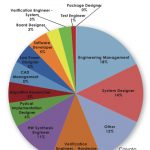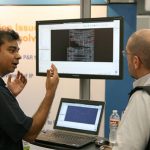You are currently viewing SemiWiki as a guest which gives you limited access to the site. To view blog comments and experience other SemiWiki features you must be a registered member. Registration is fast, simple, and absolutely free so please,
join our community today!
WP_Term Object
(
[term_id] => 157
[name] => EDA
[slug] => eda
[term_group] => 0
[term_taxonomy_id] => 157
[taxonomy] => category
[description] => Electronic Design Automation
[parent] => 0
[count] => 4356
[filter] => raw
[cat_ID] => 157
[category_count] => 4356
[category_description] => Electronic Design Automation
[cat_name] => EDA
[category_nicename] => eda
[category_parent] => 0
[is_post] =>
)
Calypto 2013 Reportby Paul McLellan on 07-05-2013 at 5:48 amCategories: EDA
Each year Calypto runs a survey of end-users. This year’s survey and report has two parts, power reduction and high level synthesis (HLS).
The topics covered are:
- survey methodology and demographics
- top methods used to reduce power
- engineering time spent on specfiic RTL tasks to reduce power
- plans to deploy RTL power reduction
…
Read More
Easy SystemC Debuggingby Randy Smith on 07-03-2013 at 7:00 pmCategories: EDA
Electronic system design has been slowly migrating to higher level languages such as SystemC for more than a decade now. SystemC is an open source C++ library that has emerged as a standard for high-level design and system modeling. Writing code in SystemC has several advantages which I won’t elaborate on in this article, though… Read More
If DAC is the most general event in our industry, then the LicenseMonitor Users’ Group Silicon Valley has to be one of the most focused. It was held back in May but one of the key presentations was Brian Janes of RTDA talking about what is new in the latest version of LicenseMonitor which is 2013.03.
Like a number of people at RTDA,… Read More
IR drop analysis across your board, package and SoC ensures that your Power Delivery Network (PDN) is robust, and that your system will function to spec. There are both static and dynamic approaches to IR drop analysis of a full-chip with billions of transistors, while the dynamic approach produces the most accurate results compared… Read More
Grenoble is French city well-known within the Semiconductor industry to be one of the last location counting wafer fabs, not only in France but in fact in Europe. Back in the 70’s, under French government impulse, through the Commisariat à l’Energie Atomique (CEA) and the LETI subsidiary in charge of Electronic related research,… Read More
Is it possible to design a processor with very high performance and low power consumption? To answer that, embedded illuminati are now focusing on designs tuned to specific workloads – creating a tailored processor that does a few things very efficiently, with nothing extra.… Read More
What do nVidia, Freescale and GlobalFoundries have in common? They are semiconductor companies? They are ARM licensees? They are doing 28nm chips? They all have the letter ‘a’ in their names?
All true, but that’s not what I was thinking of. But the letter ‘a’ is a clue since Apache (and Ansys) begin with ‘a’. All three companies have… Read More
I hadn’t followed EDA start-up company Ausdiamuch before, so at DAC I met with Sam Appleton, CEO to find out what they are all about.
Sanjay Lall, Sam Appleton – Ausdia
… Read More
Eric Peersfounded Missing Link tools in 2008 and his company was acquiredby Methodics in 2012, so I met with him at DAC to understand how their EDA tools for Design, Test and Regression Management are used in an SoC design.
Eric Peers, Methodics… Read More
At DAC you can measure buzz by how many people are crowded into your booth. I saw a crowd at the Oasys booth, so stopped to take in their 10 minute overview presentation. Here’s what I learned.… Read More












Quantum Computing Technologies and Challenges